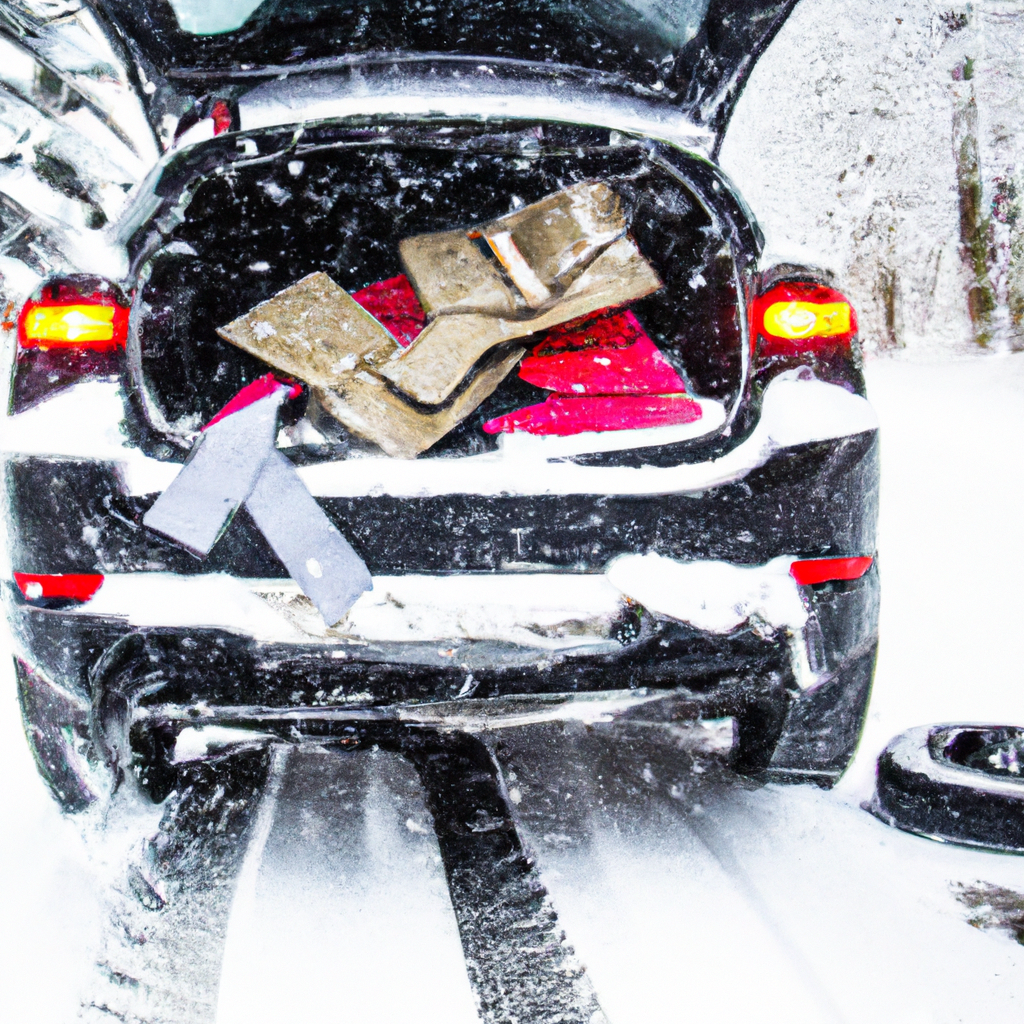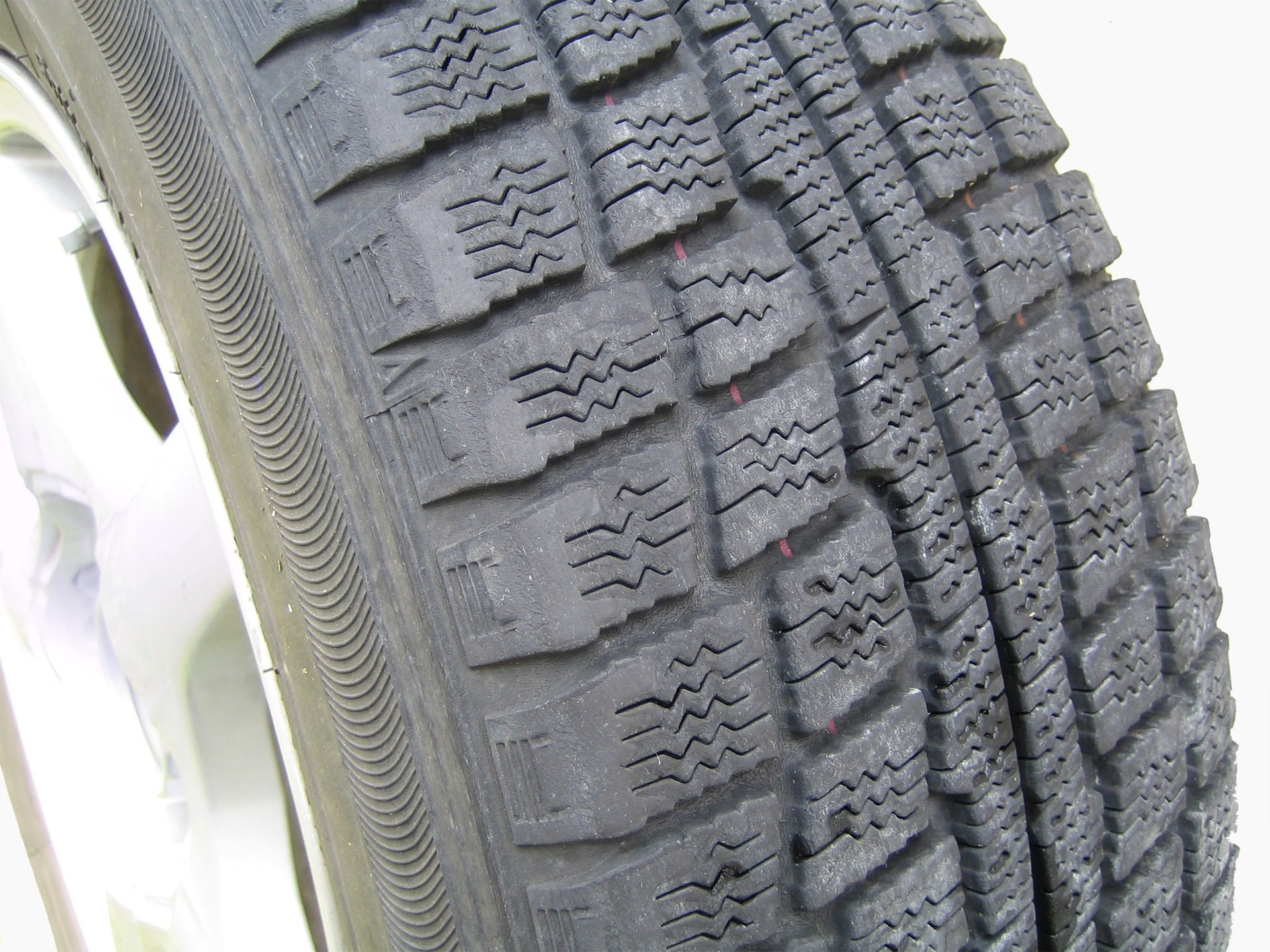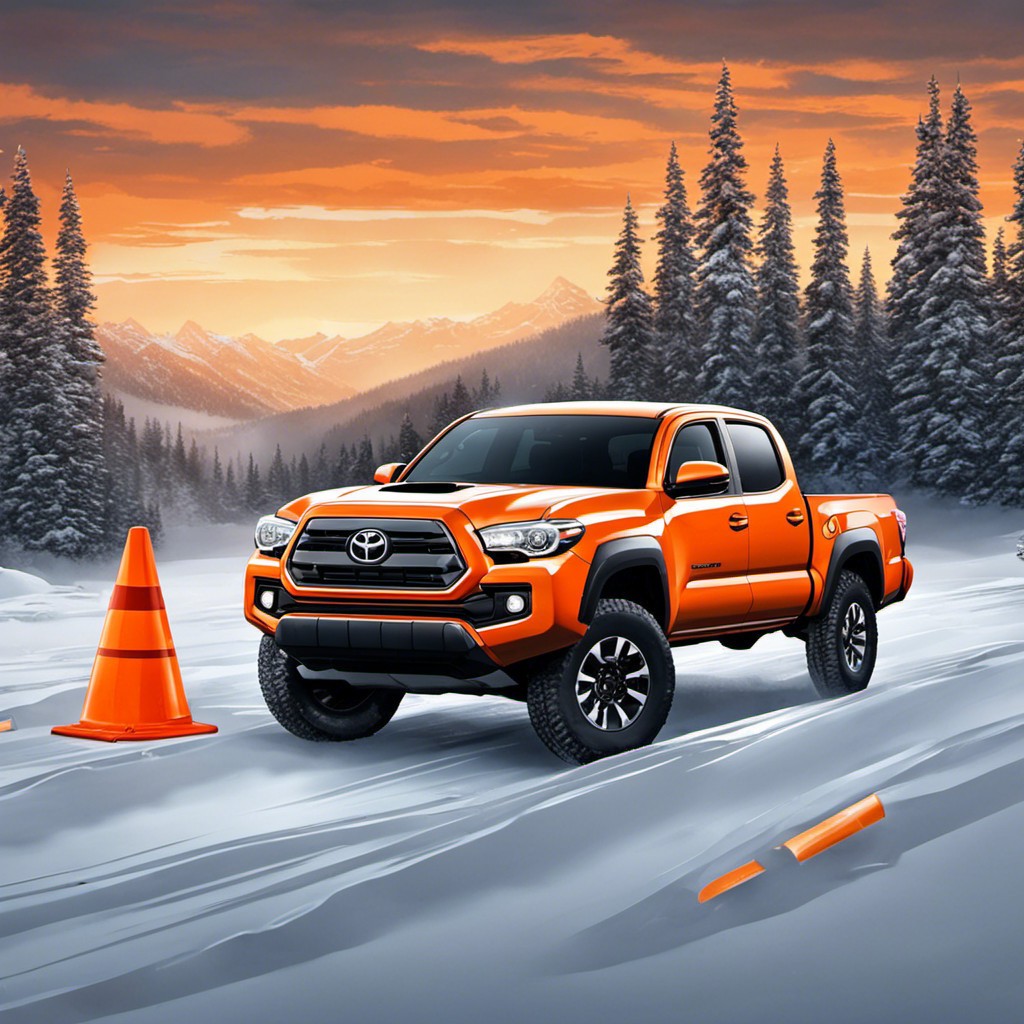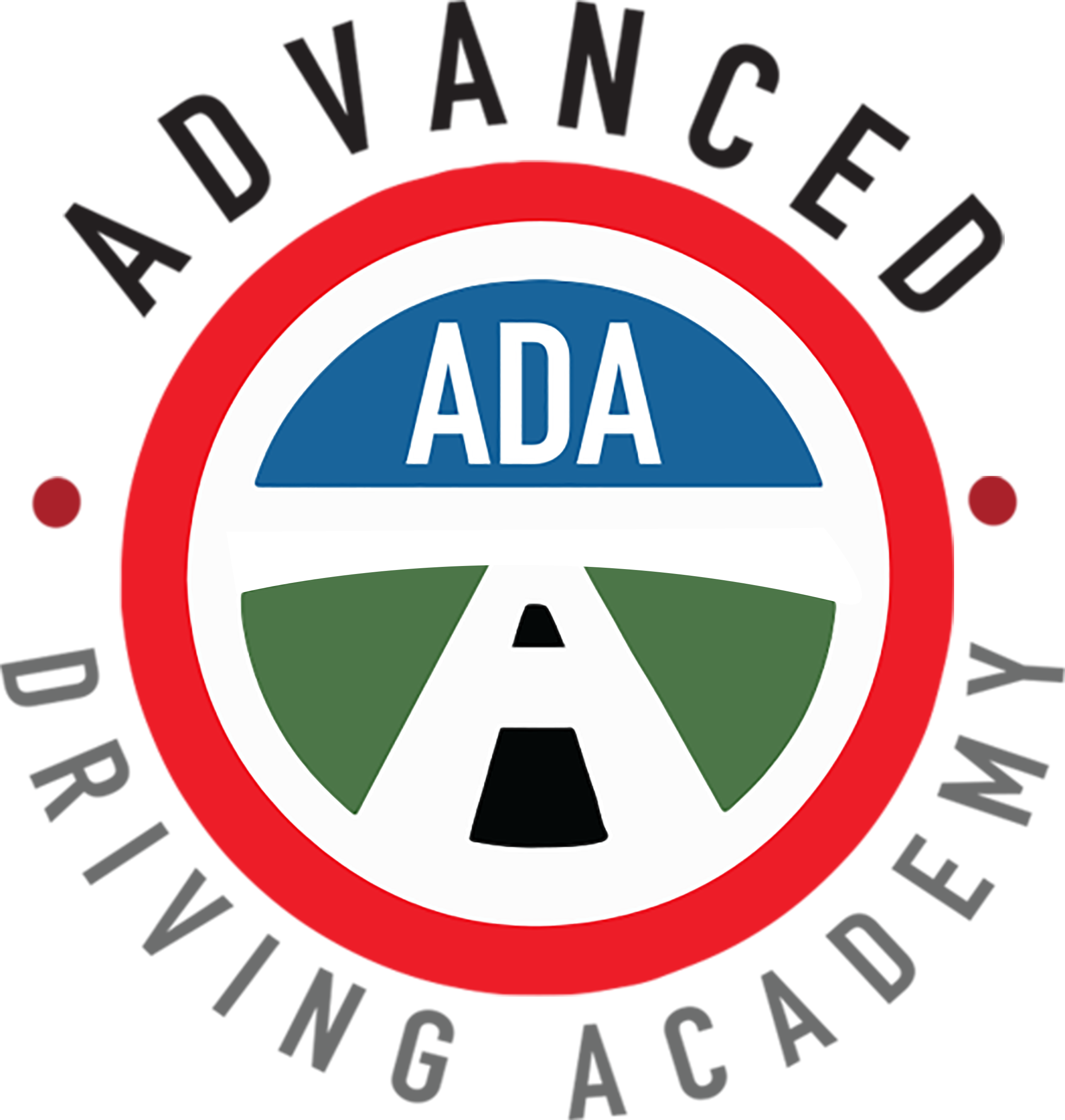As the leaves fall and the air becomes crisp, it’s a sure sign that winter is just around the corner. With it comes freezing temperatures, snow, icy roads, and other severe weather that can make winter driving a real challenge. Emergency preparedness is critical. It is a good time to consider winter driver training.
It’s also essential to prepare your car and yourself for these winter driving conditions, so you can stay safe on the roads. This involves more than just switching to snow tires and updating your car’s insurance policy. It’s also about keeping a keen eye on the weather reports, understanding the potential winter hazards, and knowing how to navigate slippery roads.
In this article, we’ll provide you with some winter safety tips that have proven effective in previous winters.

Check Your Vehicle’s Fluids for Winter Driving
To maintain your vehicle’s performance in cold weather, check your vehicle’s fluids regularly. Start with Oil Level to ensure your engine’s smooth functioning. Follow it up by Checking Engine Oil for its quality and quantity.
The Importance of Coolant or Antifreeze can’t be overstated, as it prevents freezing and overheating. Windshield Washer Fluid Level should be apt for clear visibility. Finally, comprehend Understanding Fluid Levels for Power Steering Fluid and Transmission oil, vital for your ride’s comfortable maneuvering and efficient gear changes.
Check Oil Levels
The winter driving journey begins with checking your oil levels. It’s as easy as pulling out the dipstick (after your engine has cooled), wiping it off, reinserting it, and then pulling it out again to check the level. Make sure it’s between the minimum and maximum lines. But, hey, don’t stop there! With antifreeze, power steering fluid, transmission oil, and even your washer fluid level, maintaining these levels is crucial to your vehicle’s health. So, roll up your sleeves and let’s keep that engine purring!
Checking Engine Oil
It’s as easy as pie. First, park your vehicle on level ground and wait for the engine to cool down. Then, pull out the dipstick, wipe it clean, and reinsert it fully. Upon pulling it out again, you will notice oil stuck on it. The oil should be between the two marks. If it’s not, you may need to top up.
This simple check ensures your engine is always lubricated, avoiding potential damage. While we’re on the topic of fluids, remember to also check your antifreeze, washer fluid level, power steering fluid, and transmission oil. Stay tuned for more on these in our later sections.
Importance of Coolant
Imagine the icy winter chill, your breath misting in the crisp air. Now, imagine your car engine feeling the same chill. Cue the importance of coolant. Coolant, also known as antifreeze, keeps your car’s engine from freezing in cold weather and, surprisingly, overheating in warm weather. Sounds like magic, right? But wait, there’s more. Winter driving is not just hard on you, winter driving is hard on your vehicle.
This humble fluid also protects your engine from corrosion. In a nutshell, coolant is a superhero in your car’s engine. So, next time you check your washer fluid level, power steering fluid, or transmission oil, don’t forget the coolant. Your car will surely thank you for it!
Check the Battery
Checking your battery starts with a Battery Voltage Test. Use a voltmeter to measure your battery voltage. If the voltage is low, you should move on to Checking Battery Voltage with the engine running. This will tell you if the alternator is performing well. Spotting Corrosion is crucial; inspect battery cables for any corrosion, which can affect performance.
Next, Testing Battery Strength will ensure it’s still robust, and if not, Replacing Old Batteries is the last step. A fresh battery can make a world of difference in your vehicle’s reliability.
Winter Driving Battery Voltage Checks
Just as you’ve ensured all your vehicle’s fluids are in check, it’s now time to move forward and give your battery some attention. Can’t wait to get started? Let’s get right in to test the battery voltage.
Firstly, you’ll need to locate your car’s battery and disconnect the battery cables. Next, using a voltmeter, measure the battery voltage. An ideal reading should be around 12.6 volts. Don’t worry if the reading is slightly less, your alternator will charge it up when the car’s running.
Remember, this is a simple way to ensure your car battery is in good shape. Isn’t it relaxing to know you’re taking care of your vehicle’s health?
The alternator should also be checked, as it’s the primary source of recharging your battery. Remember to inspect your battery cables for any wear and tear too. It’s as simple as that! So, when’s the last time you checked your battery voltage?
The prime time for your electrical weakness is as you get in to winter driving season… best check before it gets cold out.
Spotting Corrosion
One crucial aspect to keep an eye on is spotting corrosion on your battery. Corrosion is a telltale sign that something’s not right with your battery or alternator. White, green, or blue fuzz around the battery posts or battery cables is a clear indication of corrosion. This not only affects the battery voltage but can also lead to poor connections. Relax, it’s pretty easy to spot and even easier to clean. However, if you’re noticing corrosion frequently, it might be time to consider a replacement.
Inspect the Tires for Winter Driving ing
The most import thing between you and the road is a tiny piece of rubber, a patch of your winter tire. This “contact patch” is a life saver for you when winter driving.
It’s important to keep an eye on your tires, especially as colder months approach. Checking tire pressure helps maintain optimal performance and safety. Rotating tires for winter evenly distributes wear, extending their lifespan. You should also comprehend the unique benefits of snow tires, designed to handle winter’s slippery roads. The importance of winter tires cannot be overstated, as they provide better traction and braking performance. Lastly, we’ll cover the topic of switching to winter tires, a crucial step to prepare your vehicle for the challenging conditions ahead.
Check Tire Pressure
Think you’re done after checking your battery? Hold that thought! There’s another important step. Now, let’s shift gears and talk about your car’s tires.
First on our list is Checking Tire Pressure. A properly inflated tire not only ensures a smooth drive but also extends the life of your tires. Make it a habit to check your tire pressure at least once a month.
Keep in mind, tire pressure can drop with the temperature, so an extra check during winter months wouldn’t hurt. Use a good quality pressure gauge and inflate your tires as per the manufacturer’s recommended PSI. Keep rolling smoothly, folks!
Rotating Tires for Winter
Just as we’ve topped up our batteries, let’s roll into the world of tire maintenance. A critical part of preparing your vehicle for the winter driving is rotating your tires. Believe it or not, this simple step can greatly increase your car’s stability and traction on snowy or icy roads. It’s all about ensuring even wear and tear, and maximizing the life of your tires. So, while it might seem a bit tedious, remember it’s an essential winter preparation for your car. Stay tuned, as we delve deeper into understanding snow tires and their significance in the coming sections.
Understanding Snow Tires
Now, let’s move on to a topic that’s essential for those chilly months: Understanding Snow Tires. Snow tires, also known as winter tires, are specifically designed to provide better grip and control on icy and snowy roads. The key here is in the tread patterns and softer rubber compound that they’re made of. The deeper grooves and biting edges allow them to grip onto the snow, while the softer rubber stays flexible in cold temperatures to maintain traction. Indeed, understanding your snow tires is crucial to maintain safety and performance during winter drives. So, don’t underestimate the power of a good set of snow tires! The best winter driving investment you will make beyond winter driver training is a good set of winter tires.

Tread Depth
Let’s explore Tread Depth. First, we’ll break down how to Check Tire Tread Depth and its importance. We’ll learn about Measuring Tread Depth accurately. We’ll delve into the Minimum Tread Depth for Snow Tires, ensuring safety in winter conditions. We’ll identify the Indicators of Low Tread Depth and when it’s time for change. Lastly, we’ll guide you on Replacing Tires Based on Tread Depth to maintain road safety.
Check Tire Tread Depth
And here’s an intriguing fact: Your tire’s tread depth is a vital factor in ensuring safe driving, especially in challenging weather conditions. So, how do you check the tread depth? It’s an absolute breeze! All you need is a penny. Yes, you heard it right, a simple penny. Just place it into several tread grooves across the tire. If part of Lincoln’s head is always covered by the tread, then you’re good to go. This means your tire tread depth is in the safe zone. Remember, keeping a check on your tread depth is an easy way to ensure your safety on the road.
Measuring Tread Depth
It’s time to measure the tread depth of your tires. This isn’t rocket science, so don’t fret! All you need is a simple tool called a tread depth gauge. To use it, you simply press the probe into a groove on your tire and read the number. Trust me, it’s as easy as pie. Remember, a deeper tread means better traction especially in slippery conditions. So, relax, grab a cup of tea, your tread depth gauge, and let’s get down to the nitty-gritty. Measuring tread depth can be a breeze with the right tools and mindset.
Minimum Tread Depth for Snow Tires
For winter driving, getting the right type of tire and the right age of tire is critical. When it’s winter and snow is part of your daily driving condition, your tires should be ready to take on the challenge. Snow tires should typically have a tread depth of about 6/32 of an inch. This gives your car a better grip on snowy and icy roads, helping you drive safely.
However, remember that regulations on minimum tread depth may vary depending on your location. It’s always a good idea to check local laws to ensure you’re in compliance. Stay safe and happy winter driving!
Winter Tires
Let’s take a chill journey through the world of winter tires. First, we’ll ponder why you might want to consider winter tires. We’ll then slide into the benefits of winter tires, making the investment seem very appealing. After that, we’ll glide into a buying guide for winter tires for winter driving, ensuring you make an informed purchase. Next, we’ll carefully tread through how to install winter tires – it’s easier than you think! Lastly, we’ll end with some winter tire safety tips to ensure you stay safe on those icy roads. So, buckle up and let’s roll!
Consider Winter Tires
While maintaining optimal tread depth is essential, it might not be enough when winter rolls around. Now let’s shift gears and consider winter tires. If you live in an area that experiences harsh winters with heavy snowfall and icy conditions, these tires can be a game-changer. Winter tires are specifically designed to handle cold temperatures, ice, and snow.
They provide superior traction, control, and braking capabilities compared to all-season tires, making them a safer option for winter driving. Remember, your safety is paramount, so don’t skimp on quality winter tires if winter conditions are a constant in your area. You’ll thank yourself when you’re navigating those slippery roads with ease.
Benefits of Winter Tires
Just as the right tread depth is crucial for a safe drive, so is the utilization of winter tires when the temperature drops. Now, let’s look at the benefits of winter tires. They’re not just for snowy conditions, you know. These handy rubber companions provide enhanced traction, control, and safety in cold temperatures, not to mention their stellar performance on icy or snowy roads! Plus, their special rubber compound remains flexible even in the chilliest of conditions, ensuring that your ride is as smooth and comfortable as a cozy winter evening by the fireplace. So, when winter is just around the corner, remember to give your car the gift of winter tires.
Buying Guide for Winter Tires
When it comes to buying winter tires, it’s all about timing, performance, and budget. Start shopping early, preferably in the fall, before winter driving season hits. This gives you ample time to research and compare. Look for tires that promise excellent traction and braking on ice and snow. Talk to friends about their experience drivign in your region on their winter tires. Lastly, set a budget. Prices can vary widely, so decide what you’re willing to spend before you start shopping. Remember, investing in good quality winter tires is not just a purchase; it’s an investment in your safety.
Check the Lights
Take a relaxed approach to Check the Lights on your vehicle. Begin with the Check Headlights section to ensure visibility. Then, test your tail lights in the Checking Brake Lights section. Follow this by Testing Turn Signals to ensure your indicator lights are working properly. Next, evaluate your fog lamps under Evaluating Fog Lights. Lastly, Ensuring Proper Light Alignment guarantees optimal illumination. With these steps, you can feel confident about your car’s lighting system.
Check Headlights
After ensuring your vehicle is well-equipped for winter driving with winter tires, it’s time to illuminate our way forward. Let’s start with the Check Headlights. It’s vital to regularly check your headlights, along with tail lights and indicator lights, to ensure they’re shining properly. This can be done by simply turning your car on and walking around to visually confirm they’re working. Remember, optimal visibility is essential for safe driving, especially during foggy or dark winter evenings. Also, check your fog lamps to see if they’re functioning well. A well-lit road can make all the difference when it comes to safe driving. So, keep your path bright and clear.
Checking Brake Lights
Picture this: you’re driving on a foggy night, your fog lamps are on, but your brake lights are not functioning correctly. A scary thought, isn’t it? So, let’s avoid this nightmare scenario. Take a few seconds to check your brake lights. Get a friend to help if possible. Simply press the brake pedal and have your helper confirm that the indicator lights are lighting up as they should. Remember, safety is not just about you but about all road users.
TIP – When you are following an electric car, be prepared for it to decelerate as quickly as braking when the driver lifts off the throttle. The probem is there will not be any brake lights. This is because the regenerative nature of electric cars puts a lot of force on the spinning motors so they can regenerate electricity… don’t follow elecric cars too closely, particularly when you are winter driving.
Testing Turn Signals
Just as the grip provided by winter tires is crucial, so is the ability for other drivers to anticipate your movements on the road. Let’s now shift our focus to Testing Turn Signals. All you have to do is simply turn on your vehicle and engage the left and right turn signals. Afterward, walk around the vehicle to confirm they are blinking. Enjoy the rhythm of their pulsating light – it’s like your car’s way of communicating with the world. Remember, a properly operating turn signal is a symphony of safety on the road.
Check the Heating and Cooling Systems
Let’s explore the heating and cooling systems of your car. First, we’ll discuss how to check the heater and understand its crucial role. Next, we’ll delve into the importance of a functioning heating system and how it impacts our driving experience. As we proceed, you’ll learn how to recognize heating system issues and understand the signs of trouble. Winter can bring unique challenges, so we’ll cover winter car overheating solutions to keep your ride smooth. Finally, we’ll explain the importance of antifreeze in maintaining the perfect temperature for your vehicle.
Check the Heater
And now, let’s turn our attention to an often overlooked aspect, the heater. The heart of your car’s comfort when winter driving, the heater is more than just a luxury. Being prepared means ensuring that your heater is as ready for winter as your exterior lights. So, how do you check the heater? It’s simple. Start your car and set the heater to high. If it doesn’t blow hot air within a few minutes, you’ve got a problem. It could be a sign of a bigger issue, like a malfunctioning thermostat or a leak in the cooling system. So, to avoid a chilly ride, always ensure your heater works perfectly.
Importance of a Functioning Heating System
And just when you thought you were done with the lights, here comes another crucial factor to inspect – the heating system. Why is this so important, you might ask? Well, a functioning heating system is not just about providing a comfortable cabin temperature. It plays an essential role in ensuring your engine performs optimally during cold weather. A well-maintained heating system can prevent your engine from freezing up, which can lead to costly repairs. So, don’t ignore that little dial on your dashboard. It’s not just about comfort, it’s about your car’s overall health too. Remember, a happy car equals a happy driver. Stay tuned for how to recognize heating system issues.
Recognizing Heating System Issues
Now, recognizing heating system issues is crucial to avoiding an unexpected winter chill. Some telltale signs include unusual noises, no heat even when the system is turned on, and the car overheating. These signs could mean a potential issue with your heating system. Remember, staying warm is not just about comfort, it’s about safety too! So, don’t ignore these signs. After all, no one wants to be stuck in a cold car during winter, right?

Check the Wiper Blades
Check the Wiper Blades begins with the simple act of Inspecting Wiper Blades. Next, we look at the specifics of Checking Wiper Blade Condition, so you can identify when a change is needed. Once identified, we’ll guide you on Replacing Wiper Blades for a clear view in any weather. To keep your wipers in top shape, we’ll cover Wiper Blade Maintenance. Lastly, we’ll discuss the Cost of Wiper Blades so you can budget accordingly. It’s truly simple and easy, just follow along.
Inspect Wiper Blades
Believe it or not, after checking your heating and cooling systems, it’s also crucial to inspect your wiper blades. Now, you might be wondering, “Why should I bother about wiper blades?” Well, they’re your best friends during a downpour or a snowstorm, providing visibility and keeping you safe on the road.
Start by lifting each wiper arm off the windshield and examine the rubber blade. Look for any signs of cracking, tearing, or other damage. If the rubber is still smooth and flexible, your wipers are in good shape. But if it’s brittle or torn, it’s high time to consider a replacement. Remember, a clear view of the road is key to safe driving.
Checking Wiper Blade Condition
Stepping away from the warm or cool comfort of your vehicle’s interior, let’s take a moment to focus on a feature that’s often overlooked, but significantly crucial: the wiper blades.
In checking the condition of your wiper blades, start by simply looking at them. Are they cracked, torn, or missing chunks? If yes, it’s time for a replacement. You also want to observe whether they’re leaving streaks on your windshield, which is another telltale sign of wear. Take a relaxed, but detailed approach to this inspection; remember, your wiper blades ensure clear visibility during unfavorable weather conditions, and checking their condition should be a routine part of your vehicle maintenance.
Replacing Wiper Blades
And now, imagine the comfort of driving in a heavy downpour with your wiper blades doing their job perfectly. To keep this feeling alive, let’s talk about replacing wiper blades. Like everything else, wiper blades also have a lifespan. On average, they need to be replaced every six to twelve months. But don’t worry, this isn’t a task that requires a mechanic. You can easily do it yourself. Just remember to purchase the right size and type for your car. You can find this information in your vehicle’s manual or from a reputable auto parts store. Replacing wiper blades is a simple yet crucial step towards safer driving.
Replace Blades
Starting with the importance of replacing worn blades, we’ll move on to the best wiper blades for winter. Also crucial, is knowing when to replace wiper blades. To ensure longevity, we’ll share some handy maintenance tips for wiper blades. Lastly, your safety matters; hence, we’ll cover some safety precautions while replacing wiper blades. Enjoy this relaxed guide to replace blades.
Replace Worn Blades
Just like you wouldn’t ignore a worn-out tire, you shouldn’t overlook worn wiper blades when you are winter driving. Your safety is paramount, so let’s dive into how to replace those worn-out blades. Selecting the right blade size is crucial. Your vehicle’s manual will have this information, or you can check online. Once you have the correct blades, lift the wiper arm away from the windshield and depress the small tab on the underside of the wiper where it meets the wiper arm. Slide the old wiper blade off the arm. Line up the new wiper blade with the arm and push it into place until you hear a click. Voila! Your visibility is no longer compromised.
Best Wiper Blades for Winter Driving
Just as you thought you’ve mastered the art of checking wiper blades, let’s throw in another curveball. Winter. It comes along with its share of challenges, doesn’t it? Now, you’re probably wondering, “What are the best wiper blades for winter?” Not to worry, we’ve got you covered.
Winter wiper blades are designed to endure harsh weather conditions, ensuring your windshield remains clear and safe to navigate through. They are more robust, with a protective shell that prevents ice and snow from clogging up the blade. Look out for blades that are labeled as “winter” or “snow” blades. It’s worth investing in these to ensure you have a stress-free winter driving experience.
When to Replace Wiper Blades
The rule of thumb is to change your wiper blades every six to twelve months, depending on their condition and performance. However, you should also look out for specific signs of wear and tear like streaks on your windshield or unusual noises. If the rubber looks cracked or feels rough to the touch, it’s definitely time for a change. Remember, the ability to clearly see the road in all weather conditions is crucial for safe driving, so do not delay replacing worn-out wiper blades.
Prepare an Emergency Kit
We start with food and water, the bare essentials. Then we dive into Essential Food and Water Supplies, because you can’t survive on chips alone. Next, we wrap ourselves in Blankets and Warm Clothing. Remember to pack a sleeping bag and spare clothes. Moving on, we cover Necessary Tools and Equipment. Don’t forget a fire starter, shelter, and flashlight. Finally, we secure our kit with Road Safety Items. Now, we’re ready for anything!
Food and Water
Just picture this for a moment. You’ve replaced your blades and now you’re ready for any unexpected situation. The next logical step is to prepare an emergency kit. Let’s dive into the first item on our list: Food and Water.
Imagine you’re stuck somewhere, it’s essential to have food and water supplies to keep you nourished and hydrated. Pack non-perishable food items and enough water for at least three days. It may not sound like much, but in a survival situation, every bit counts. Don’t forget, in the next sections we’ll discuss items like clothing, a sleeping bag for shelter, a fire starter, a flashlight, and spare clothes. Now you’re starting to see the full picture, right?
Essential Food and Water Supplies
While it’s crucial to have a sharp blade, it’s just as vital to have the right supplies, especially when it comes to Essential Food and Water. You never know when you might get stranded when you are driving in winter and need sustenance. It’s advisable to always pack non-perishable food items and enough water to last for several days. Don’t forget about dietary needs and allergies when selecting your food items. Also, always pack a can opener if your food requires one. Stay tuned as we explore more on blankets, clothing, a sleeping bag, and other necessary tools and equipment.
Blankets and Warm Clothing
After the diligent work of replacing blades, you might think you’ve got everything covered. But wait! Let’s shift to the comfort of your journey. Ever thought about the need for blankets and warm clothing? Yes, they’re a part of your emergency kit too. A sleeping bag, for instance, can make cold nights bearable. Seasons may change, but the warmth from a cozy blanket never fades. It’s not just about combating the cold. It’s also about feeling safe and secure in the midst of the unknown. So, don’t forget to pack these items along with your other essentials. Because, indeed, preparation is the key to a hassle-free trip.
Check the Exhaust System
We smoothly swing into Checking Exhaust Pipes, ensuring the safety of your vehicle. Next, we maintain a serene vibe while Monitoring Carbon Monoxide Levels – an essential step in keeping you and your passengers safe. Following that, we approach Replacing Faulty Mufflers with calm precision. Lastly, we wind down by Checking the Heat Shields, making sure your car is in top-notch condition. All in all, a comprehensive approach to Check the Exhaust System.
Inspect Exhaust Pipes
While an emergency kit can offer a solid sense of security, it’s equally essential to ensure your vehicle is in top form before hitting the road.
Inspecting your exhaust pipes is an often overlooked, yet crucial part of vehicle maintenance. Imagine this: you’re cruising down the road, relaxed, and suddenly you hear a loud noise from underneath your car. Yes, that could be a faulty exhaust pipe. To save yourself from such an unpleasant surprise, always make it a habit to visually inspect your exhaust pipes for any signs of rust, holes, or damage. Remember, a small effort now can save you a big headache later.
Checking Exhaust Pipes
Having secured your emergency kit, let’s shift gears into another crucial area. Checking your exhaust pipes is next on our to-do list. This task, although seemingly daunting, is actually a peaceful and straightforward process. Simply, take a good look at the pipes for any signs of rust or damage. Keep in mind, these pipes have an essential role in directing harmful gases away from your car’s interior, so their condition should not be taken lightly. Don’t worry, though, because it’s quite easy to spot any problems. If you see any rust or holes, it’s time to get your pipes replaced. So, take a deep breath, stay relaxed, and begin your inspection.
Monitoring Carbon Monoxide Levels
Having secured your emergency kit, it’s now time to shift our attention to a less visible, but equally significant concern: your vehicle’s exhaust system. Specifically, let’s discuss the importance of monitoring carbon monoxide levels. Carbon monoxide is a colorless, odorless gas that can lead to serious health problems if inhaled in large quantities. A properly functioning exhaust system should be able to channel this gas safely out of the car. However, a faulty system might leak carbon monoxide into the vehicle’s cabin. One way to ensure safety is by installing a carbon monoxide detector in your vehicle. This will alert you to any unusual increases in the gas levels, allowing you to rectify the situation promptly.
Conclusion
In conclusion, winter driving conditions can be a real test for cars and drivers alike. By following these winter safety tips, you can ensure your safety and the emergency preparedness child safety. Always keep yourself updated with the weather reports and prepare for freezing temperatures, bad weather, storm conditions, and other severe weather.
Remember, previous winter safety preparation helps to tackle winter hazards in other areas too. Make sure to check your winter wiper blades and other car essentials for a smooth ride. Be mindful of your insurance and the current traffic conditions. Remember, safety is paramount during freezing weather and in inclement weather. Stay safe and stay warm, happy winter driving!
Related Post
Master the icy roads! Discover the top five crucial lessons from winter driver training, ensuring your safety during the frosty season.
Stay safe this winter! Learn essential tips for winter driving and get home safely.






